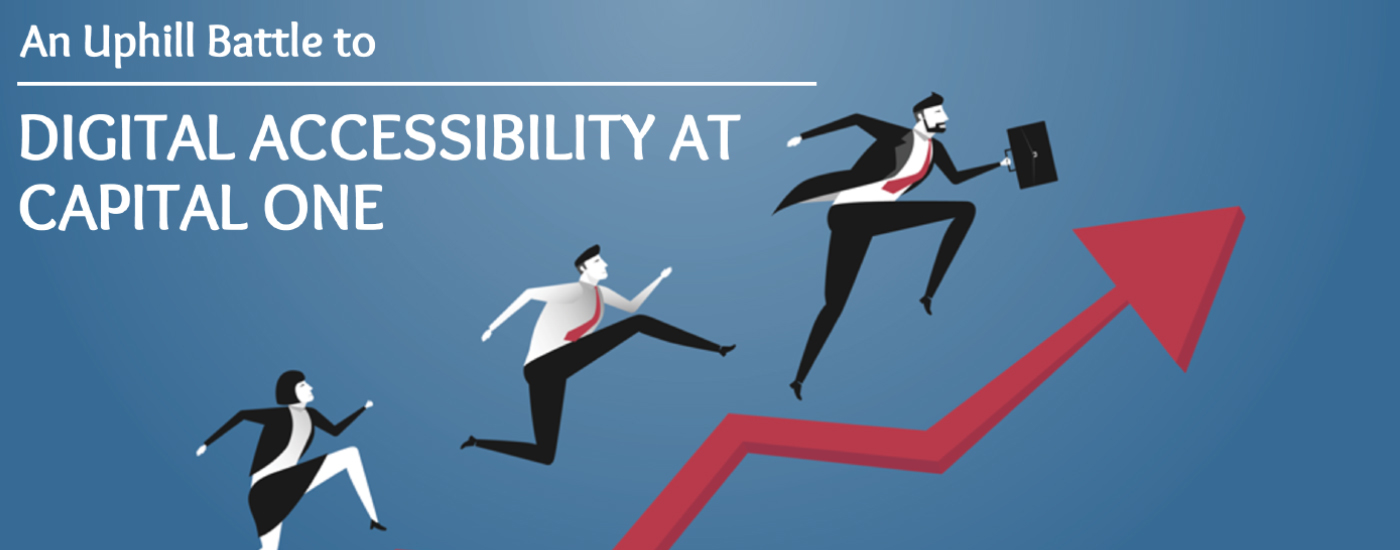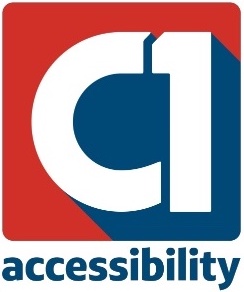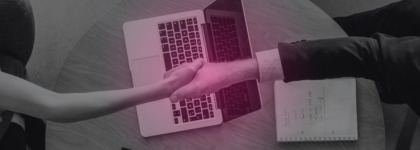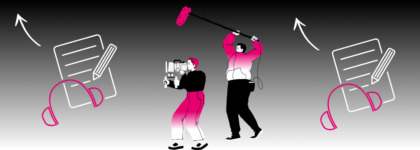An Uphill Battle to Digital Accessibility at Capital One
Updated: June 3, 2019
Digital Accessibility at Capital One
Digital accessibility is a huge priority for Capital One, and a lot of work has been done to make it that way. In the webinar, Accessibility at Capital One, Mark Penicook, Digital Accessibility Manager, shares the history of the digital accessibility team and the obstacles they have overcome as they developed throughout the years.
The Team
Their digital accessibility team, which started out as a team of one, now consists of 11 individuals from various backgrounds. These individuals are software engineers and people with development experience, individuals with disabilities, and those in process and risk management roles. Together, they are responsible for all things related to digital accessibility at Capital One, in every line of business – the card business, bank business, financial services, and investing, in the US, UK and Canada. In order to further their initiative and achieve success, this team works very closely with many other teams at Capital One including the design team, engineers, the legal team, and compliance groups.
Awareness Gap
The first stumbling block the accessibility team faced was a lack of awareness in regard to accessibility. When they first started out, many people didn’t even know what accessibility was or what it entailed. The few people who had heard of accessibility often equated it with making things accessible for physical disabilities in physical locations – for instance, wheelchair ramps and automatic doors.
Digital accessibility, was a whole new animal. It would be up to Capital One’s accessibility team to educate the public as well as the internal decision makers on this concept. Through hard work and dedication, the team would close this awareness gap and draw the distinction between accessibility for physical accommodations and brick and mortar organizations. Now, the same principles also apply to the digital world, web, mobile, and messaging.
But Why Is It Necessary?
As the awareness gap began to close, the accessibility team was faced with another challenge. Accessibility was not being thought of as something that was necessary. Mark Penicook shared a quote from a colleague who would often say “It’s not a defect if it wasn’t a requirement.”
Any accessibility advocate would shutter at such a mindset. But despite the newfound awareness about accessibility, everyone was going about their work without considering accessibility to be part of their responsibility or a requirement for them to meet. This leads to the next challenge, shifting the attitude of decision makers to gain buy-in and make accessibility a priority.
Winning Hearts and Minds
The team learned that they needed to convince people that accessibility was, in fact, a necessity. While the team continued to drive awareness about accessibility, they had a new focus to start getting individuals to think about accessibility first. They needed to work to get people to realize that accessibility should be thought about and made a priority from the very beginning stages of ideation, not merely an afterthought.
An Uphill Battle
After gaining some stakeholders and having partners get involved and integrate accessibility into the early stages – during product ideation, design phases, and in partnership during their development phases – it was still an uphill battle.
Partners, designers, and developers started to realize that accessibility wasn’t going to be as easy as they may have thought. It was going to take hard work. Despite thinking they had finally made it, the accessibility team realized this was going to be an uphill battle.
In continuing their pursuit, the accessibility team started to realize that things within Capital One were pretty decentralized. In different lines of business and different locations, people were doing things very differently from one another. This decentralization was posing a big challenge for creating standards and implementing accessibility within the organization because they were dealing with so many separate moving parts. Like any successful team would, these innovators saw the challenges and raised them their next big idea!
The Climb Uphill
The new plan was to come up with a really strategic mission – a twofold mission – to drive awareness of accessibility, but also awareness of the existence of their team as a resource within the organization. First they would need to focus on the brand of their team, and second they would need to win hearts and minds.
Creating a Brand
In order to create a brand for themselves and position their team as a resource within Capital One, they first created a logo. The logo was an “A” in stencil lettering that also revealed the letter “C” within it. The logo would be utilized in all of their email signatures, posters, on a flag, and on other internal items to signify and help develop their brand.
Driving Empathy and Awareness
In addition to promoting themselves as the accessibility team, they also had to win hearts and minds. They created an internal video that they used to drive empathy and awareness for accessibility. The video is also used for training every year for anyone that will be affecting or impacting customer-facing digital UI or properties. This way, everyone is given the opportunity to watch the video and gain a deeper understanding of the team and the importance of accessibility.
As the team continued to fight this uphill battle, they brought together different groups of people from all across the company. They collaborated with people from product design, and engineering. They had TED style talks focusing on the topic of accessibility, and they gave
hands-on accessibility workshops. With these combined efforts, they were able to build momentum and get people excited about accessibility.
Today at Capital One accessibility is a main focus within the organization from the very beginning – including at new hire orientation.
__
To learn more about accessibility at Capital One, watch the full webinar below.
Further Reading

Subscribe to the Blog Digest
Sign up to receive our blog digest and other information on this topic. You can unsubscribe anytime.
By subscribing you agree to our privacy policy.











